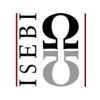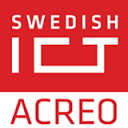Elektrische Impedanzspektroskopie (EIS) ermöglicht die Charakterisierung der elektrischen bzw. dielektrischen Eigenschaften eines Messobjektes. Diese elektrischen Eigenschaften sind maßgeblich für eine Vielzahl funktioneller und struktureller Aspekte von Materialien, Substanzen oder Erzeugnissen – selbst dann, wenn ihre primäre Funktion gar nicht elektrisch ist. Somit spielt die elektrische Impedanzspektroskopie eine wesentliche Rolle bei der Entwicklung von Materialien, Prüfung von Komponenten und industriellen Erzeugnissen, Diagnose von Krankheitsbildern oder Qualitätssicherung von chemischen und pharmakologischen Prozessen. Sei es in der Bioanalytik und klinischen Diagnostik, Umweltanalytik und chemischer Prozesstechnik oder bei der Herstellung und Verwendung von elektronischen Komponenten: Die elektrische Impedanzspektroskopie ist das wichtigste Werkzeug zur Charakterisierung elektrischer Eigenschaften.
Lesen Sie weiter, um einen Überblick über die wichtigsten Aspekte der elektrischen Impedanzspektroskopie zu erhalten.
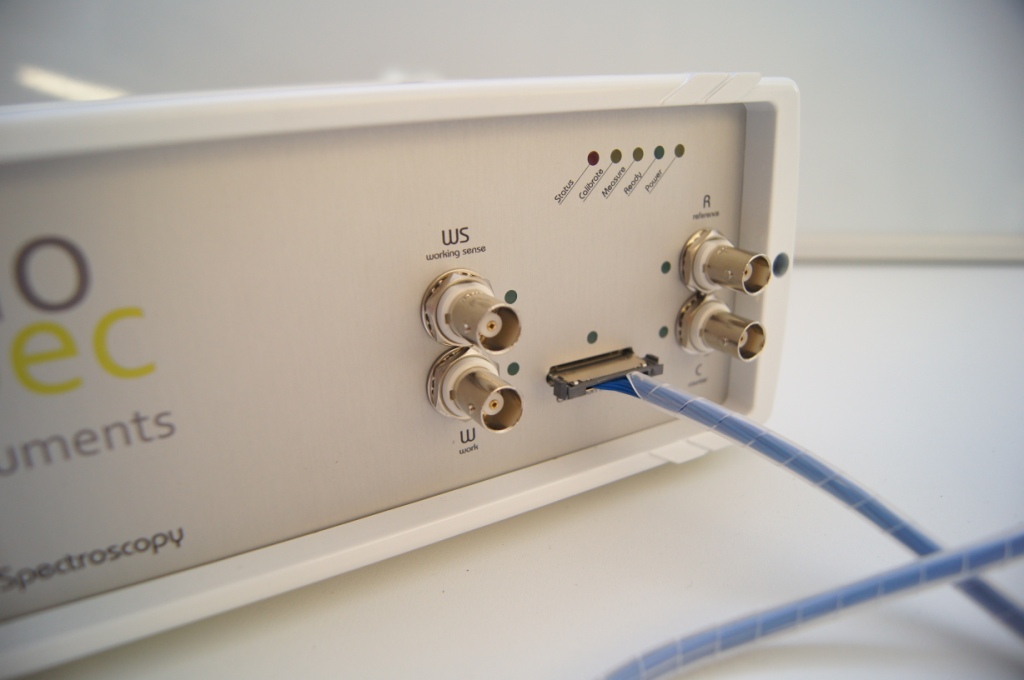
Im Gegensatz zu einer reinen DC oder Gleichtstrommessung des Widerstands erfasst die elektrische Impedanzspektroskopie die komplexe Impedanz – repräsentiert durch Betrag und Phase oder Real- und Imaginäranteil in Abhängigkeit der Frequenz. Man spricht je nach Anwendungsgebiet von elektrischer Impedanzspektroskopie (EIS), komplexer Impedanzanalyse, AC-Widerstandsmessung oder dielektrischer Spektroskopie – aber letztlich ist stets das gleiche gemeint: Das Messen von komplexen, frequenzabhängigen elektrischen Impedanzen. Wird eine komplexe Impedanz von einem Wechselstrom i durchflossen, bildet sich über dieser Impedanz eine Spannungsdifferenz v aus. Sie folgen dabei dem von einfachen Gleichtstromwiderständen bekanntem Ohmschen Gesetz: R = v/i. Komplexe Impedanzen führen nicht nur zu einem betragsmäßigem Verhältnis zwischen Spannung und Strom, sondern zusätzlich auch zu einem Phasenversatz. Für die meisten praktisch auftretenden Fälle variieren sowohl Betrag als auch Phase (oder Real- und Imaginärteil) einer Impedanz über der Frequenz.
Diese dielektrischen Eigenschaften sind also ein maßgeblicher Bestandteil von charakteristischen Materialparametern. Das gilt für alle Arten von Materialien – technisch genutzte wie biologische, feste, ebenso wie flüssige oder gasförmige. Dabei lassen die elektrischen Eigenschaften in vielen Fällen Rückschlüsse auf strukturelle und funktionelle Eigenschaften von Materialen, Komponenten, aber auch biologischen Geweben oder noch komplexeren Gebilden wie Organen zu.
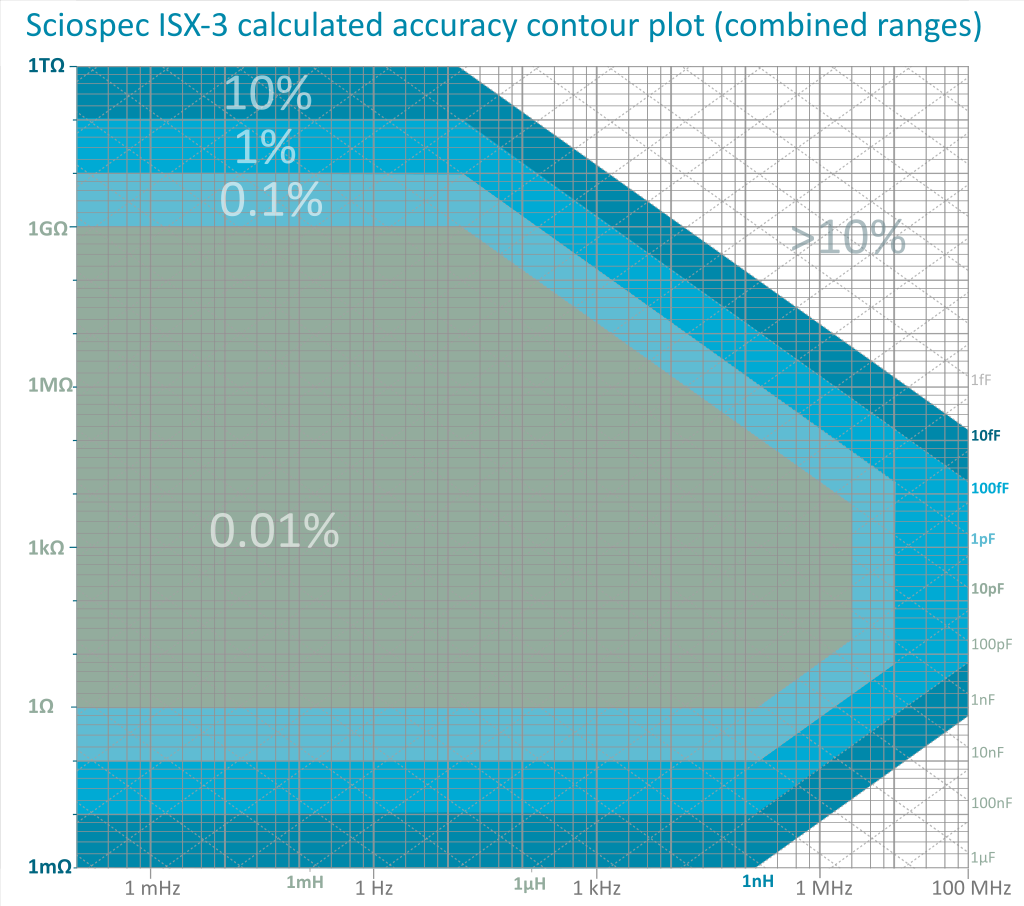
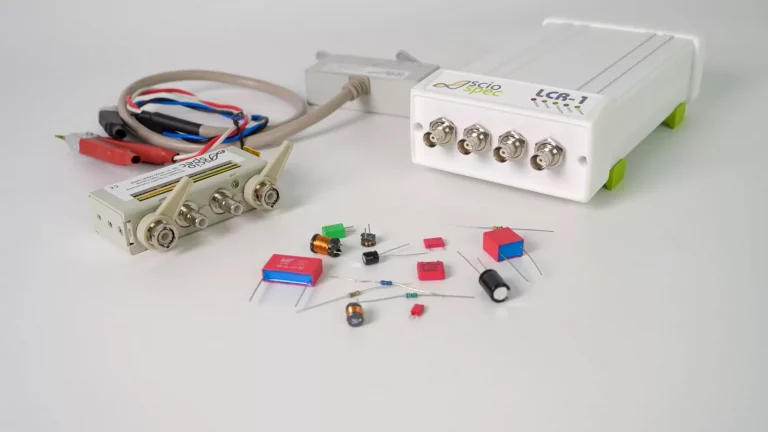
Zusammen mit den Abmessungen eines Objekts und einigen zusätzlichen Parametern bilden diese Materialeigenschaften bekannte Phänomene wie Widerstand, Kapazität oder Induktivität aus:
Kennt man die Form und Maße des Materials kann man also eine Geometriekonstante bilden, mittels derer eine Umrechnung zwischen der jeweiligen Materialeigenschaft und dem resultierenden Widerstand, Kapazität oder Induktivität möglich wird. Bspw. ergibt sich der Widerstand eines einfachen Leiters aus R=ρ*Länge/Querschnitt. Für einen einfachen Plattenkondensator ergibt sich die Kapazität zu C = ε * Fläche / Abstand. Um die Materialeigenschaften an sich zu ermitteln bieten sich spezielle Messzellen an.
Die elektrische Impedanz Z ist eine komplexe frequenzabhängige Größe, die auch für die idealisierten elektrischen „Grundelemente“ angegeben werden kann:
In der Praxis zeigen reale Messobjekte wie elektrische Komponenten, Materialien, Sensoren, etc. komplexes elektrisches Verhalten – sie folgen nicht einem der idealen Verläufe. Man kann Sie jedoch durch Kombinationen idealisierter Modelle beschreiben (elektrische Ersatzschaltbilder). Dabei gibt es auch an bestimmte Anwendungsfälle und Phänomene angepasste Elemente und Modelle wie „constant phase elements (CPE)“, Warburg-Impedanzen und viele weitere.
Praktisch bedeutet die komplexe und frequenzabhängige Natur von elektrischen Eigenschaften, dass eine Messung bei einer einzelnen Frequenz in den meisten Fällen unzureichend ist. Eine frequenzaufgelöste (auch „spektroskopische“) Messung ist erforderlich. Eben hier kommt die elektrische Impedanzspektroskopie (EIS) zum Tragen.

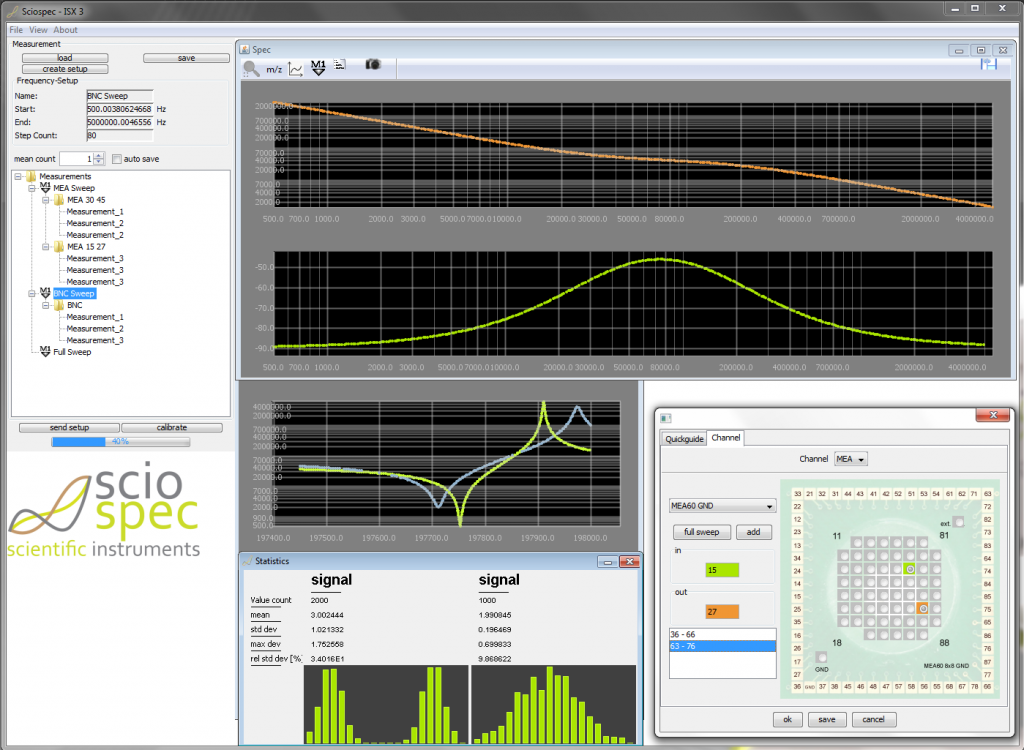
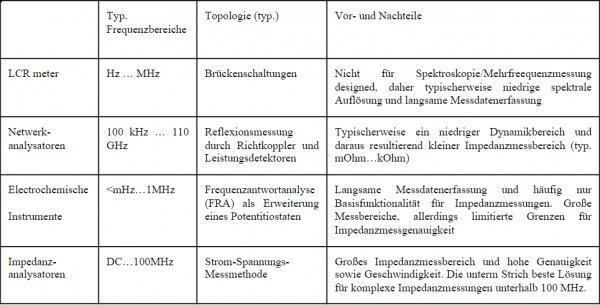
Die gängigsten Instrumententypen zur Messung der komplexen Impedanz sind:
Sciospec bietet eine breite Palette von Produkten und Lösung für Impedanzmessung, zahlreiche anwendungsspezifische Messdapter, Multiplexer, Erweiterungsmodule und vieles mehr. Um mehr darüber zu erfahren, was man bei der Messung von elektrischen Impedanzen und der Wahl eines Messgerätes beachten sollte, siehe hier.
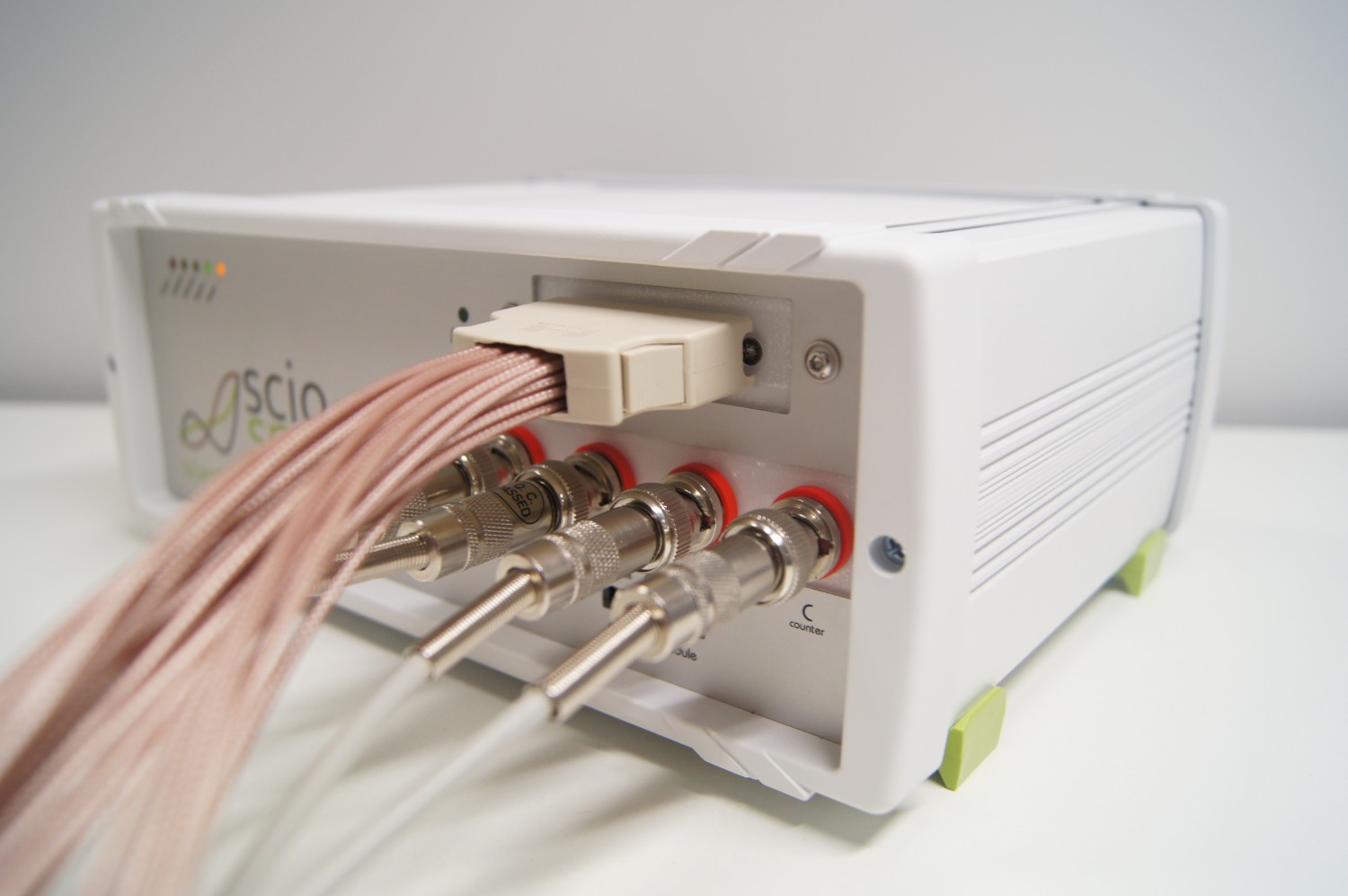
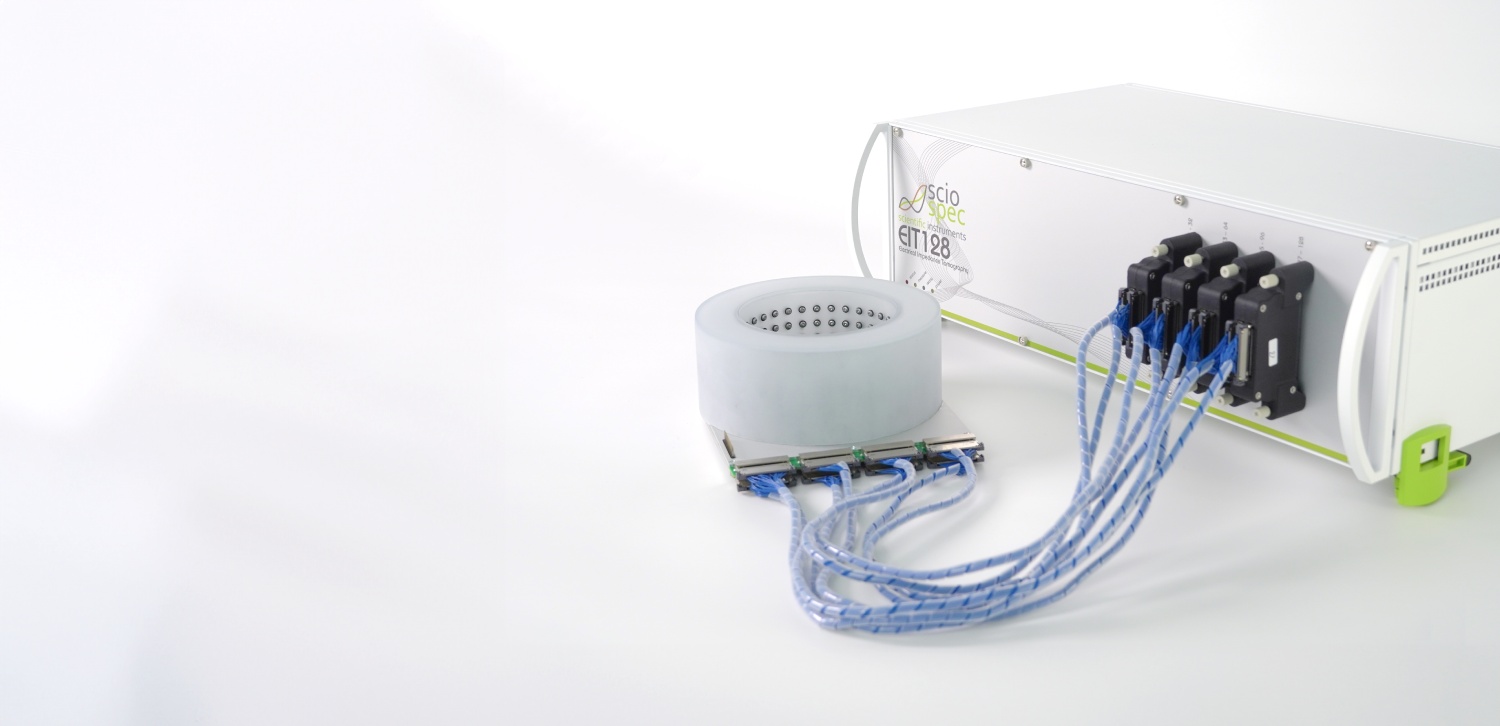
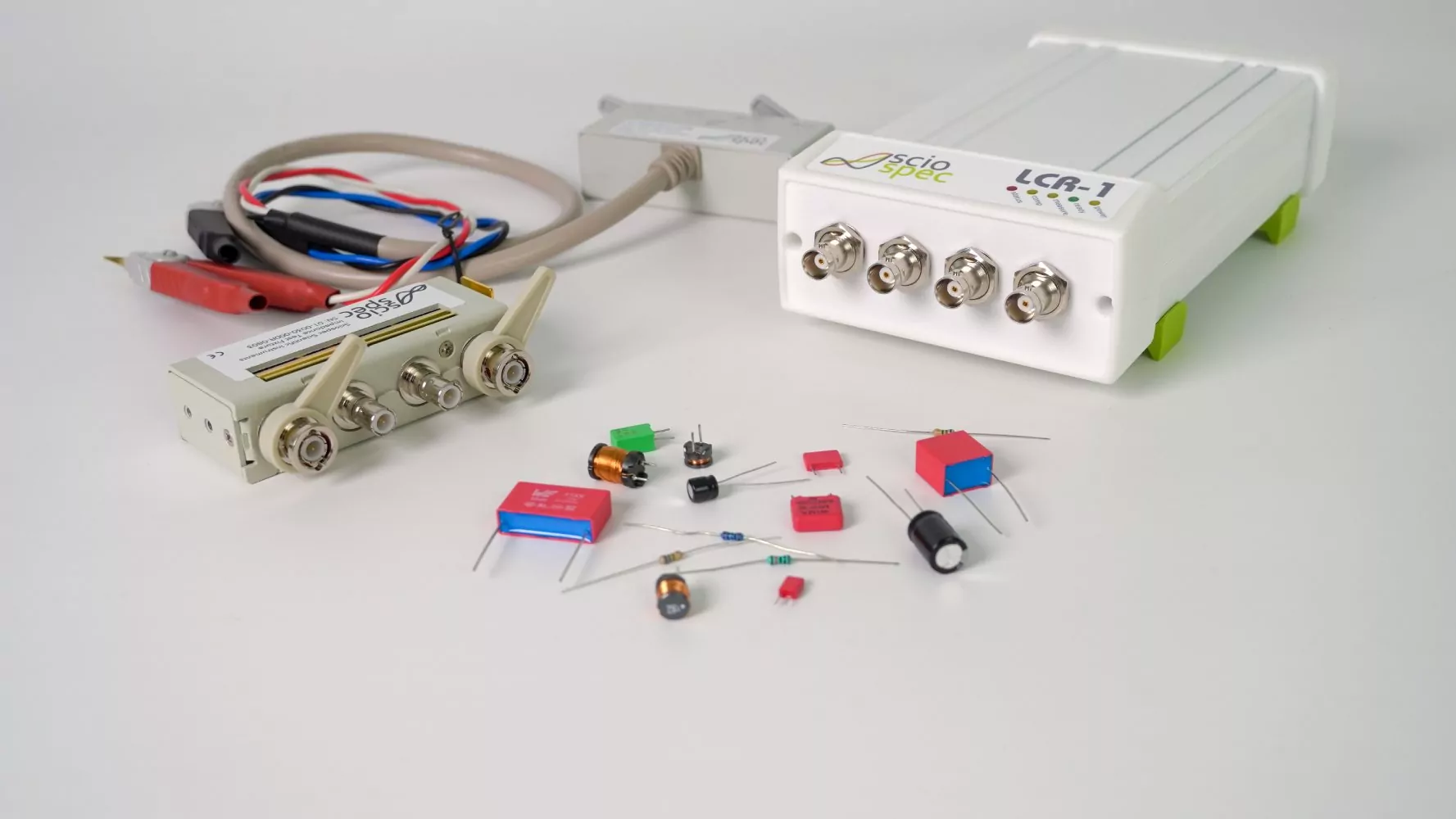
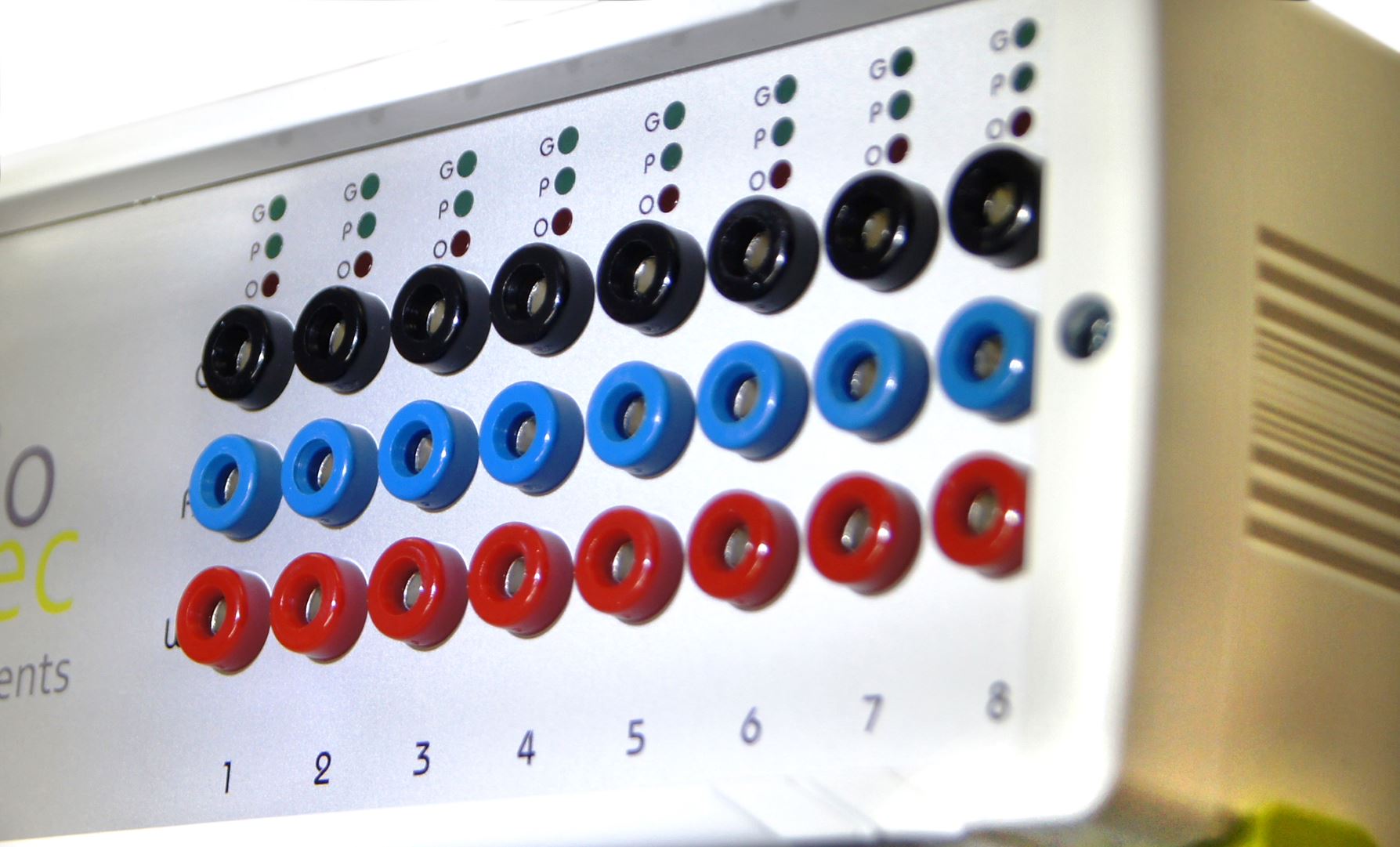
Die elektrische Impedanzspektroskopie ist das wichtigste Werkzeug zur Charakterisierung elektrischer Eigenschaften.
Sciospec gehört zu den weltweit führenden Experten für elektrische Impedanzspektroskopie. Gern helfen wir auch Ihnen, diese Technologie einzusetzen.
Bioanalytik – Zellbiologische Assays Von kleinsten Biosensor und point-of-care Lösungen über mehrkanalige Biochip-Systeme bis hin zu massiv-mehrkanaligen Lösungen für automatisierte Prozessprüfung oder pharmakologische Testanwendungen – Skalierbarkeit steckt in unseren Genen und Bioanalytik stellt seit je her den größten Anteil unserer Anwendungsfälle. Der typischste Vertreter sind dabei Anwendungen, die auf Zellkulturen basieren – sogenannte zellbasierte Assays. Die Zellkulturen können dabei entweder auf Substraten mit Elektrodenstrukturen wachsen oder sich im Durchfluss (bspw. in mikrofluidischen Kanälen) befinden. Immer häufiger sind auch dreidimensionale Anordnungen von Zellverbünden und Elektroden, wie sie insbesondere bei sogenannten Organ-on-Chip Anwendungen relevant sind. Gemessen wir dabei die elektrische Impedanz von Zellverbünden oder teilweise auch einzelnen Zellen. Die elektrischen Eigenschaften lassen Rückschlüsse auf die Struktur oder den physiologischen Zustand zu. Auch dynamische physiologische Aktivität wie das „Schlagen“ von Herzmuskelzellen (Kardiomyozyten) oder die Typisierung von Zellarten in Durchflusskanälen sind typische Anwendungsszenarien für die Impedanzspektroskopie. Häufig werden spezifische abgeleitete Parameter aus den Impedanzdaten extrahiert – bspw. der TEER (trans epitelial electrical resistance) oder Wachstumsparameter wie die Gewebedichte. Die Anwendungsmöglichkeiten solcher zellbiologischer Assays sind weitreichend. Besonders spannende Vertreter sind Wirksamkeits- und Verträglichkeitsprüfungen von pharmazeutischen Wirkstoffen und die klinische Diagnostik bspw. die Phenotypisierung von Risikogruppen für bestimmte neurodegenerative oder kardiovaskuläre Erkrankungen. Sciospec arbeitet seit jeher intensiv mit spezialisierten Partnern aus der Bioanalytik zusammen und hat über die Jahre zahlreiche OEM Produkte dazu entwickelt.
Medizintechnik – klinische Diagnostik Nicht nur Zellkulturen und entnommenes Gewebe haben elektrische Eigenschaften, die sich diagnostisch nutzen lassen. Auch komplexe biologische Gebilde von künstlichen Organen bis hin zu Patienten lassen sich mit Impedanzspektroskopie untersuchen. Mit jahrelangem Engagement in der medizinischen Forschung bietet Sciospec mit den „medical research“ Varianten von Impedanzanalysatoren und EIT-Systemen, 60601-1 konforme Patientensicherheit für die Verwendung von elektroanalytischen Methoden in der klinischen Forschung.
Im medizinischen Bereich findet unter anderem auch die elektrische Impedanztomographie Anwendung. Dabei wird die räumliche Verteilung von elektrischen Eigenschaften im Körper erfasst und visualisiert. Eine weit verbreitete Anwendung dazu ist die Lungen-EIT, bei der die Ventilation der Lungenflügel mittels EIT überwacht werden. Daraus können bspw. für die künstliche Beatmung wichtige Parameter oder Indikatoren für bevorstehende traumatische Ereignisse für Lungen- und Herzfunktionalität abgeleitet werden. Andere typische Anwendungen sind Gestenerkennung, Muskelkontraktion oder auch neurologische Anwendungen. Für die Impedanztomographie bietet Sciospec die wohl leistungsfähigste Plattform auf dem Markt an – siehe hier.
Komponentenprüfung – Die Prüfung passiver und aktiver elektrischer Komponenten wie Widerstände, Kondensatoren und Miniaturenergiespeicher stellt für ihre Hersteller immer größere Herausforderungen dar. Zum einen müssen diese Bauteile immer umfangreicher in Datenblättern spezifiziert werden und zum anderen müssen diese Spezifikationen in der Fertigung auch überprüft werden können. Dies resultiert aus den stark steigenden Anforderungen von elektronischen Produkten für den Massenmarkt. Während es vor einigen Jahren nur bei der Entwicklung preisintensiver Produkte notwendig war, sehr präzise Komponenten zu verbauen, sind nun auch Artikel im Consumer-Bereich mit hohen Qualitätsanforderungen gefragt. Während bis vor einigen Jahren typischerweise LCR-Prüfgeräte mit einer Einzelfrequenzmessung an wenigen Proben pro Herstellungscharge ausreichend waren, müssen heute immer mehr Komponenten mit einer komplexen frequenzaufgelösten Impedanzcharakteristik geprüft werden. Dazu kommen stark gestiegene Prüfquoten: Am Beispiel Miniaturenergiespeicher, wie sie gerade im aktuellen IoT-Trend vermehrt benötigt werden, sind aufgrund der elektrischen Konditionierung und der Störanfälligkeit, Prüfquoten von 100% gefordert. Die Kombination aus applikationsspezifischer hochgenauer Impedanzspektroskopie und hoher Kanalanzahl passt hervorragend zu Sciospec´s Produktportfolio.
Materialwissenschaften Bei der Entwicklung und Erprobung von Materialen spielen die elektrischen Eigenschaften faktisch immer mindestens eine Nebenrolle, in vielen Fällen sind sie sogar der primäre Fokus. Sehr typische Beispiele dazu sind funktionelle Oberflächenbeschichtungen, Materialien für die Konstruktion von technischen Systemen oder auch Substrate für Energiespeicher. Da die elektrischen Eigenschaften hier maßgeblich bestimmen, wie geeignet ein Material für einen bestimmten Einsatz ist, kommt der Impedanzspektroskopie während der Entwicklung aber auch in der Herstellung der Materialien eine essenzielle Rolle zu.
Einsatz als Transducer Neben der Analyse von elektrischen Eigenschaften von Materialien, Strukturen oder Objekten wird elektrische Impedanz auch häufig als Vermittlergröße für Sensoren genutzt. Während der zu erfassende Zielparameter bspw. eine Gaskonzentration, eine Masse oder das Vorhandensein von bestimmten Krankheitserregern ist, wird am Sensor zunächst eine elektrische Impedanz gemessen. Dabei handelt es sich in solchen Fällen häufig nicht um die Impedanz des zu erfassenden Zielobjektes (bspw. des Gases), sondern um die eines „Vermittlers“ (auch Wandler oder englisch „transducer“). Das kann bspw. eine funktionelle Schicht auf dem Sensor sein, die ihre elektrischen Eigenschaften in Abhängigkeit zur Zielsubstanz ändert. So werden über die gut handhabbare elektrische Messung auch schwer fassbare Parameter messbar.
Weitere Anwendungsbereiche – Allgemein gesprochen: Alles hat elektrische Eigenschaften und in aller Regel haben diese einen maßgeblichen Einfluss auf das funktionelle Verhalten von Materialien, Objekten, Prozessen, usw. Das gilt auch dann, wenn die primäre Funktion überhaupt nichts mit elektrischen Eigenschaften zu tun hat, bspw. in der Lebensmittelchemie oder Umweltanalytik. Und so ist es nicht verwunderlich, dass die genaue Kenntnis der elektrischen Eigenschaften in fast allen modernen Produkten einen enormen Vorteil bringt. Sei es im Labor, bei der Entwicklung oder in der Produktionsprüfung – überall kann Impedanzspektroskopie helfen Erzeugnisse besser, qualitativ hochwertiger und sicherer zu machen.
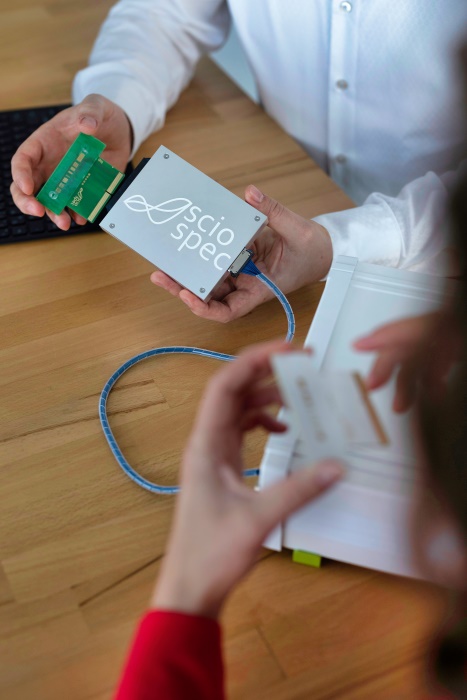
Komplexe Impedanzspektroskopie ist … komplex. In der Praxis gibt es viele Fallstricke, die es zu vermeiden gilt. Damit Sie schnell zu einem guten Ergebnis kommen und sich um die wirklich wichtigen Aspekte Ihrer Anwendung kümmern können, stehen wir Ihnen mit Rat und Tat beiseite. Unser erfahrenes Team von Experten berät Sie gern bei der Zusammenstellung eines geeigneten Messaufbaus. Mit jahrelangem Engagement in der wissenschaftlichen Gemeinschaft, Kooperationen mit den größten Namen aus Industrie und Forschung und unserer hochgradigen Spezialisierung sind wir die Experten auf unserem Gebiet. Insbesondere beim Thema Skalierung von impedimetrischen Messprozessen und Überführung von Methoden aus dem Labor in den praktischen Einsatz, haben wir das ein oder andere Ass im Ärmel. Sciospec Technologie in Form von OEM-Lösungen bildet das Herzstück zahlreicher renommierter Produkte für bioanalytische, medizinische und industrielle Applikationen.
Wenn Sie also Impedanzen messen wollen oder elektroanalytische Problemstellung haben, ist Sciospec Ihr Ansprechpartner.

